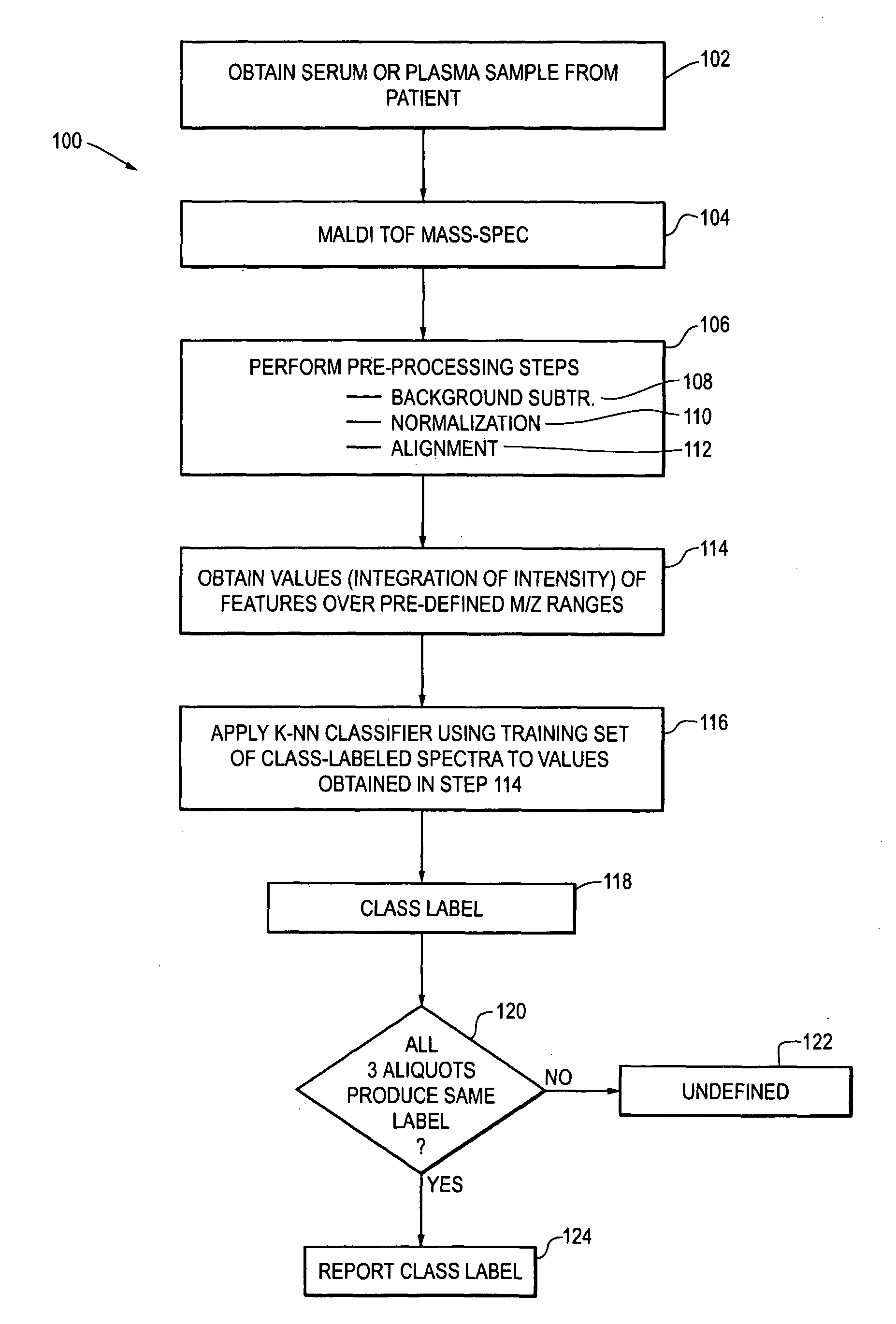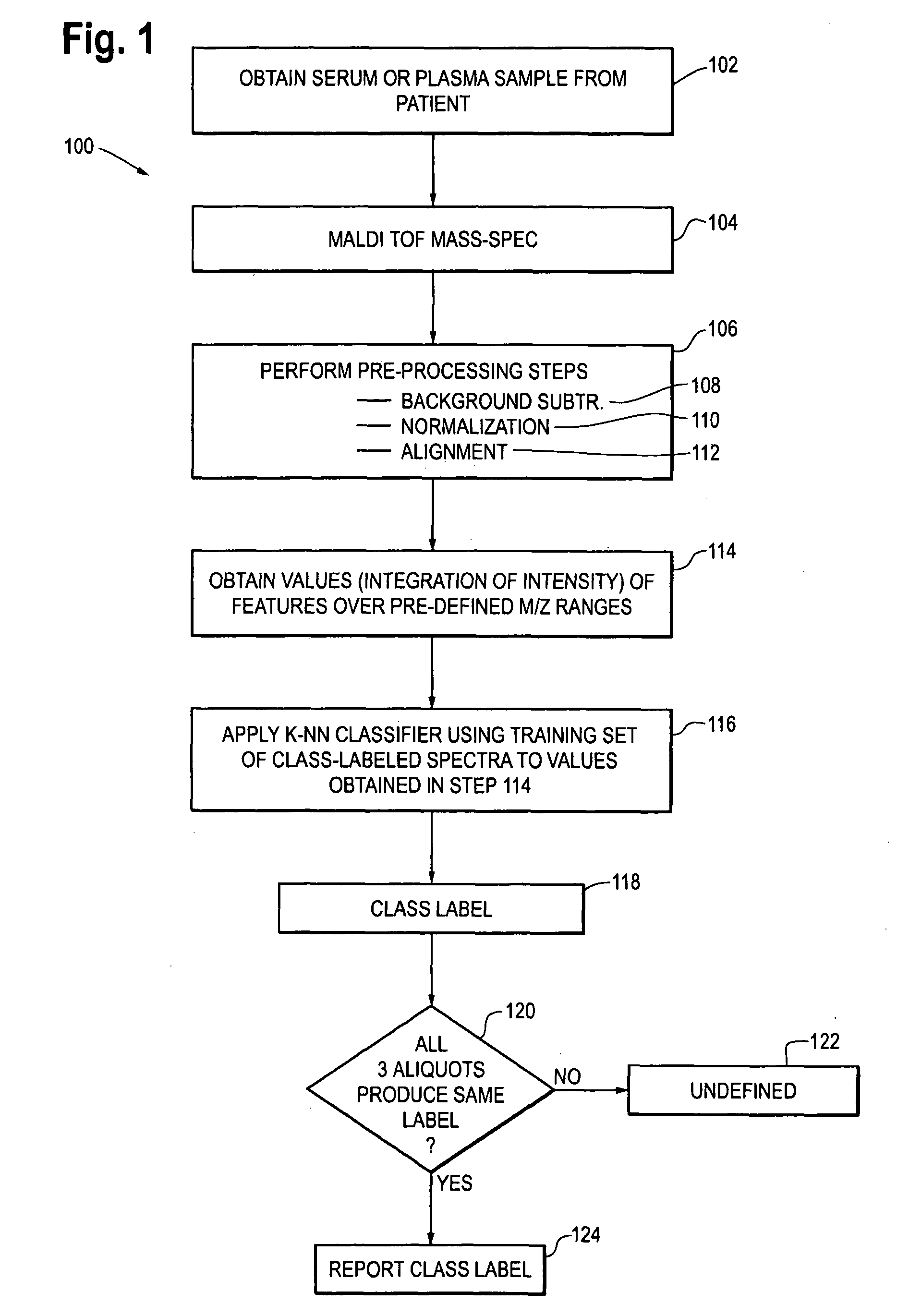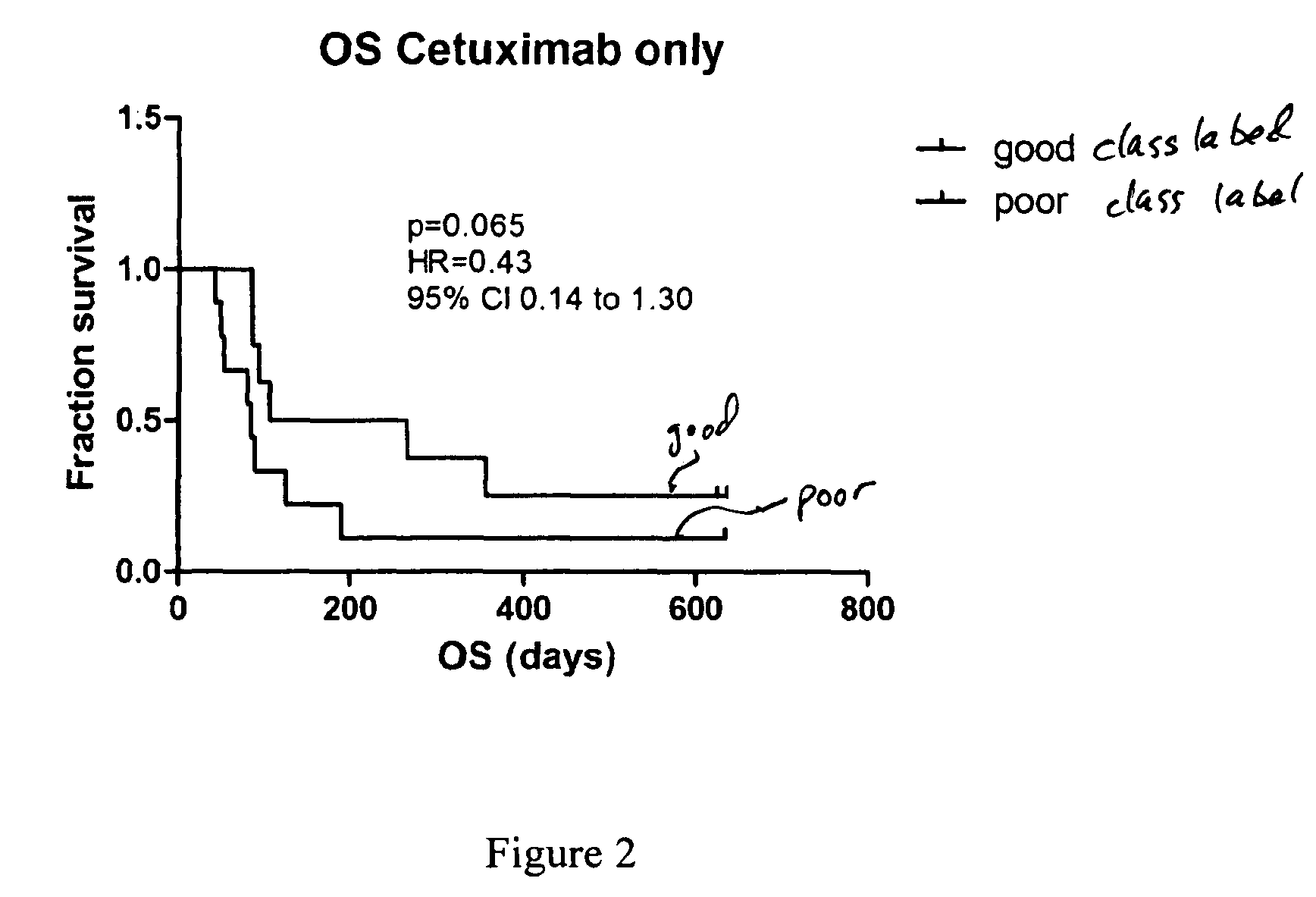Selection of non-small-cell lung cancer patients for treatment with monoclonal antibody drugs targeting EGFR pathway
a non-small cell lung cancer and antibody technology, applied in the field of cancer patients, can solve the problems of single agent being active in only a minority of patients, not always possible depending, and poor treatment of nscl
- Summary
- Abstract
- Description
- Claims
- Application Information
AI Technical Summary
Benefits of technology
Problems solved by technology
Method used
Image
Examples
Embodiment Construction
[0019]We have examined the MS profiles from serum or plasma samples from recurrent and / or metastatic NSCLC patients who were treated with cetuximab as monotherapy. The MALDI mass spectra were obtained from each sample and each patient was classified into “good” or “poor” outcome groups for survival comparison. We have found that the MS profile was predictive of survival outcomes in all EGFR-I-treated cohorts.
[0020]The methods for selection of NSCLC patients for treatment with monoclonal antibody EGFR-I is illustrated in flow chart form in FIG. 1 as a process 100.
[0021]At step 102, a serum or plasma sample is obtained from the patient. In one embodiment, the serum samples are separated into three aliquots and the mass spectroscopy and subsequent steps 104, 106 (including sub-steps 108, 110 and 112), 114, 116 and 118 are performed independently on each of the aliquots. The number of aliquots can vary, for example there may be 4 5 or 10 aliquots, and each aliquot is subject to the subs...
PUM
| Property | Measurement | Unit |
|---|---|---|
| mass spectrum | aaaaa | aaaaa |
| MALDI mass spectrometer | aaaaa | aaaaa |
| mass spectral analysis | aaaaa | aaaaa |
Abstract
Description
Claims
Application Information
 Login to View More
Login to View More - R&D
- Intellectual Property
- Life Sciences
- Materials
- Tech Scout
- Unparalleled Data Quality
- Higher Quality Content
- 60% Fewer Hallucinations
Browse by: Latest US Patents, China's latest patents, Technical Efficacy Thesaurus, Application Domain, Technology Topic, Popular Technical Reports.
© 2025 PatSnap. All rights reserved.Legal|Privacy policy|Modern Slavery Act Transparency Statement|Sitemap|About US| Contact US: help@patsnap.com



